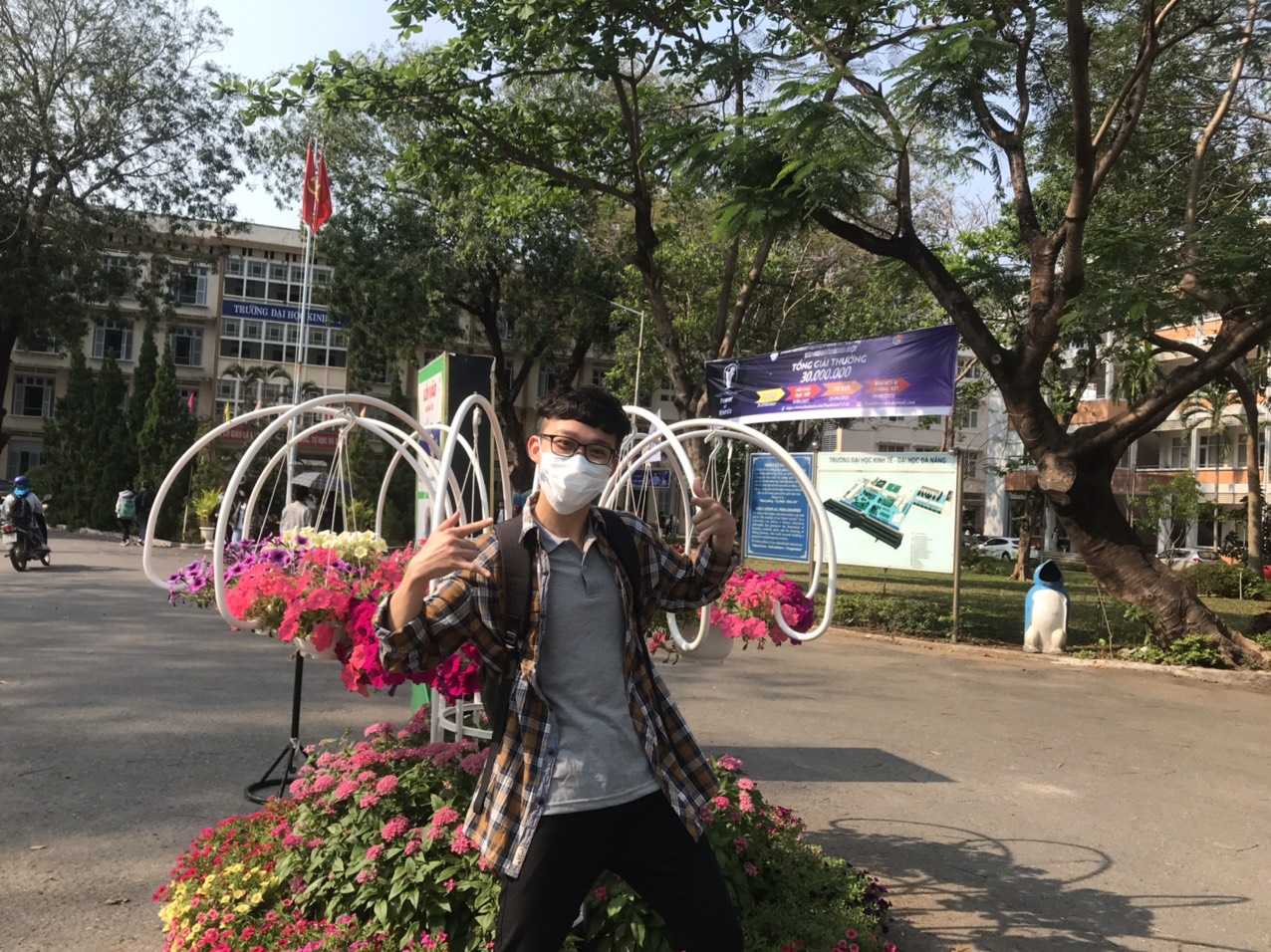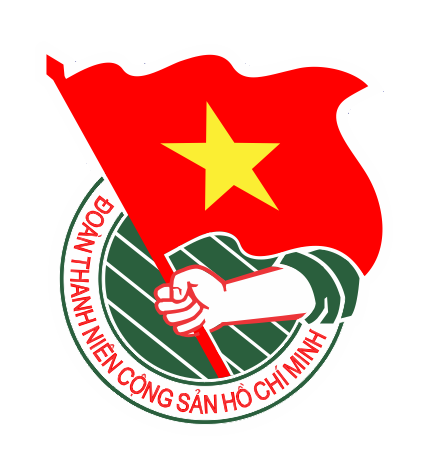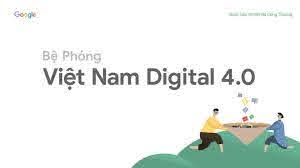Trang chủ > KỸ NĂNG - KHỞI NGHIỆP - HỘI NHẬP Học bổng
KEI Student Paper Cpmpetition The 7th
Đăng ngày: Sep 1, 2015, Đã có: 1509 lượt xem

Submission Guideline
Formatting requirements
1. There are no strict formatting requirements but all manuscripts must contain the essential elements needed to convey your manuscript, for example Abstract, Keywords, Introduction, Materials and Methods, Results, Conclusions, Artwork and Tables with Captions. If your article includes any Videos and/or other Supplementary material, this should be included in your initial submission for peer review purposes. Divide the article into clearly defined sections.
2. Figures and tables embedded in text:
Please ensure the figures and the tables included in the single file are placed next to the relevant text in the manuscript, rather than at the bottom or the top of the file.
3. Use of word processing software:
Please use correct, continuous line numbering and page numbering throughout the document. It is important that the file be saved in the native format of the word processor used. The text should be in single-column format. Keep the layout of the text as simple as possible. Most formatting codes will be removed and replaced on processing the article. In particular, do not use the word processor`s options to justify text or to hyphenate words. However, do use bold face, italics, subscripts, superscripts etc. When preparing tables, if you are using a table grid, use only one grid for each individual table and not a grid for each row. If no grid is used, use tabs, not spaces, to align columns. To avoid unnecessary errors you are strongly advised to use the `spell-check` and `grammar-check` functions of your word processor. Regardless of the file format of the original submission, at revision you must provide us with an editable file of the entire article. Keep the layout of the text as simple as possible. Most formatting codes will be removed and replaced on processing the article.
Article structure
1. Subdivision - numbered sections:
Divide your article into clearly defined and numbered sections. Subsections should be numbered 1.1 (then 1.1.1, 1.1.2, ...), 1.2, etc. (the abstract is not included in section numbering). Use this numbering also for internal cross-referencing: do not just refer to `the text`. Any subsection may be given a brief heading. Each heading should appear on its own separate line.
2. Introduction:
State the objectives of the work and provide an adequate background, avoiding a detailed literature survey or a summary of the results.
3. Material and methods:
Provide sufficient detail to allow the work to be reproduced. Methods already published should be indicated by a reference: only relevant modifications should be described.
4. Theory/calculation:
A Theory section should extend, not repeat, the background to the article already dealt with in the Introduction and lay the foundation for further work. In contrast, a Calculation section represents a practical development from a theoretical basis.
5. Results:
Results should be clear and concise.
6. Discussion:
This should explore the significance of the results of the work, not repeat them. A combined Results and Discussion section is often appropriate. Avoid extensive citations and discussion of published literature.
7. Conclusions:
The main conclusions of the study may be presented in a short Conclusions section, which may stand alone or form a subsection of a Discussion or Results and Discussion section.
8. Appendices:
If there is more than one appendix, they should be identified as A, B, etc. Formulae and equations in appendices should be given separate numbering: Eq. (A.1), Eq. (A.2), etc.; in a subsequent appendix, Eq. (B.1) and so on. Similarly for tables and figures: Table A.1; Fig. A.1, etc.
Essential title page information
1. Title. Concise and informative. Titles are often used in information-retrieval systems. Please avoid the use of acronyms, abbreviations, formular or chemical symbols in the title - these should appear in the full form e.g. `CO2` should appear as `carbon dioxide`.
2. Author names and affiliations. Where the family name may be ambiguous (e.g., a double name), please indicate this clearly. Present the authors` affiliation addresses (where the actual work was done) below the names. Indicate all affiliations with a lower-case superscript letter immediately after the author`s name and in front of the appropriate address. Provide the full postal address of each affiliation, including the country name, and, if available, the e-mail address of each author.
3. Corresponding author. Clearly indicate who will handle correspondence at all stages of refereeing and publication, also post-publication. Ensure that telephone and fax numbers (with country and area code) are provided in addition to the e-mail address and the complete postal address. Contact details must be kept up to date by the corresponding author.
4. Present/permanent address. If an author has moved since the work described in the article was done, or was visiting at the time, a "Present address" (or "Permanent address") may be indicated as a footnote to that author`s name. The address at which the author actually did the work must be retained as the main, affiliation address. Superscript Arabic numerals are used for such footnotes.
Abstract
A concise and factual abstract is required. The abstract should state briefly the purpose of the research, the principal results and major conclusions. An abstract is often presented separately from the article, so it must be able to stand alone. For this reason, references should be avoided, but if essential, then cite the author(s) and year(s). Please avoid the use of acronyms, abbreviations, formulae or chemical symbols in the abstract - these should appear in their full form e.g. `CO2` should appear as `carbon dioxide`. If essential they must be defined at their first mention in the abstract itself.
Keywords
Immediately after the abstract, provide a maximum of 6 keywords, using American spelling and avoiding general and plural terms and multiple concepts (avoid, for example, `and`, `of`). Be sparing with abbreviations: only abbreviations firmly established in the field may be eligible. These keywords will be used for indexing purposes.
Acknowledgements
Collate acknowledgements in the title page document. List here those individuals who provided help during the research (e.g., providing language help, writing assistance or proof reading the article, etc.).
Math formulas
Please submit math equations as editable text and not as images. Present simple formulae in line with normal text where possible and use the solidus (/) instead of a horizontal line for small fractional terms, e.g., X/Y. In principle, variables are to be presented in italics. Powers of e are often more conveniently denoted by exp. Number consecutively any equations that have to be displayed separately from the text (if referred to explicitly in the text).
Figure captions
Ensure that each illustration has a caption. A caption should comprise a brief title (not on the figure itself) and a description of the illustration. Keep text in the illustrations themselves to a minimum but explain all symbols and abbreviations used.
Tables
Please submit tables as editable text and not as images. Tables can be placed either next to the relevant text in the article, or on separate page(s) at the end. Number tables consecutively in accordance with their appearance in the text and place any table notes below the table body. Be sparing in the use of tables and ensure that the data presented in them do not duplicate results described elsewhere in the article. Please avoid using vertical rules.
References
1. Citation in text:
Please ensure that every reference cited in the text is also present in the reference list (and vice versa). Any references cited in the abstract must be given in full. Unpublished results and personal communications are not recommended in the reference list, but may be mentioned in the text. If these references are included in the reference list they should follow the standard reference style of the journal and should include a substitution of the publication date with either `Unpublished results` or `Personal communication`. Citation of a reference as `in press` implies that the item has been accepted for publication.
2. Reference links:
Increased discoverability of research and high quality peer review are ensured by online links to the sources cited. In order to allow us to create links to abstracting and indexing services, such as Scopus, CrossRef and PubMed, please ensure that data provided in the references are correct. Please note that incorrect surnames, journal/book titles, publication year and pagination may prevent link creation. When copying references, please be careful as they may already contain errors. Use of the DOI is encouraged.
3. Web references:
As a minimum, the full URL should be given and the date when the reference was last accessed. Any further information, if known (DOI, author names, dates, reference to a source publication, etc.), should also be given. Web references can be listed separately (e.g., after the reference list) under a different heading if desired, or can be included in the reference list.
4. Reference formatting
There are no strict requirements on reference formatting at submission. References can be in any style or format as long as the style is consistent. Where applicable, author(s) name(s), journal title/book title, chapter title/article title, year of publication, volume number/book chapter and the pagination must be present. Use of DOI is highly encouraged. If you do wish to format the references yourself they should be arranged according to the following examples:
<References>
1) The Harvard system is to be used: authors` names (no initials) and dates (and specific pages, only in the
case of quotations) are given in the main body of the text, e.g. (Parry, 1990, p. 110). References are listed
alphabetically at the end of the paper, double spaced and conform to current journal style:
2) For journals: Parry, M. (1990) The potential impact on agriculture of the greenhouse effect. Land Use Policy
7, 109-123.
3) For books: El-Hinnawi, E. and Hashmi, M. H. (1987) The State of the Environment. Butterworths, Kent.
4) Other publications: Where there is doubt include all bibliographical details. Footnotes should be indicated
in the text by superior Arabic numerals which run consecutively through the paper. They should be
grouped together in a section at the end of the text in numerical order and double spaced.
5) Journal abbreviations source
Journal names should be abbreviated according to the List of Title Word Abbreviations: http://www.issn.org/services/online-services/access-to-the-ltwa/
Submission checklist
The following list will be useful during the final checking of an article prior to sending it to the journal for review. Please consult this Guide for Authors for further details of any item.
1. Ensure that the following items are present:
2. One author has been designated as the corresponding author with contact details:
• E-mail address
• Full postal address
3. All necessary files have been uploaded, and contain:
• Keywords
• All figure captions
• All tables (including title, description, footnotes)
4. Further considerations
• Manuscript has been `spell-checked` and `grammar-checked`
• All references mentioned in the Reference list are cited in the text, and vice versa
• Permission has been obtained for use of copyrighted material from other sources (including the Internet)
5. Printed version of figures (if applicable) in color or black-and-white
• Indicate clearly whether or not color or black-and-white in print is required.
• For reproduction in black-and-white, please supply black-and-white versions of the figures for printing purposes.
Chia sẻ bài viết:
BÀI VIẾT CÙNG CHUYÊN MỤC
- Sinh viên tràn đầy năng lượng, hứng khởi và giàu cảm xúc với Tọa đàm online “Ảnh hưởng của Covid đến hoạt động của ngân hàng và tâm thế của sinh viên TCNH" - Đăng ngày: 20/04/2020
- "Yêu và được yêu” - lớp học hơn 500 sinh viên, truyền cảm hứng lịch sử - Đăng ngày: 15/04/2020
- NHÂN VIÊN KINH DOANH (THIẾT BỊ Y TẾ) - Đăng ngày: 13/02/2020
- Sales Executive (Female) - Đăng ngày: 06/11/2019
- Trải nghiệm Khóa học mùa hè của sinh viên Khoa Kinh tế Phát triển - Đăng ngày: 24/08/2017
- 10 sinh viên Trường ĐHKT được nhận học bổng của LienVietPostBank - Đăng ngày: 24/12/2016
- Khóa đào tạo kỹ năng Marketing trong khởi nghiệp - Đăng ngày: 03/12/2016
- HỘI CHỢ VIỆC LÀM NHẬT BẢN NIN2 JOB FAIR 2016 - Đăng ngày: 15/11/2016
- Khởi động Quỹ học bổng Interhands năm 2016 - Đăng ngày: 05/11/2016
- Chương trình Thực tập sinh 2016 của Công ty Cổ phần Chứng khoán Sài Gòn - Đăng ngày: 21/05/2016
- Khởi nghiệp Marketing nên bắt đầu từ đâu? - Đăng ngày: 21/05/2016
- Enactus UEB với Kewpie - Creative Photoshop - Đăng ngày: 03/02/2016
- Chương trình Nhà lãnh đạo tương lai Vingroup - Đăng ngày: 03/02/2016
- Tuyển dụng việc làm dành cho sinh viên vừa tốt nghiệp - Đăng ngày: 05/11/2015
- HỘI THẢO “HƯỚNG NGHIỆP CHO SINH VIÊN NGÀNH KINH TẾ 2015” - Đăng ngày: 03/10/2015
- THÔNG TIN CUỘC THI KHỞI NGHIỆP QUỐC GIA 2015 - Đăng ngày: 25/08/2015
- Thông báo tuyển dụng CTV tại Ngân hàng Vietcombank - Đăng ngày: 05/06/2015
- Đông đảo sinh viên ĐHQGHN tìm hiểu kinh nghiệm du học Anh quốc - Đăng ngày: 09/03/2015
- Thông báo đơn hàng đi Nhật Bản - Đăng ngày: 21/07/2014
- Tuyển dung nhân viên Kinh Doanh - Đăng ngày: 21/07/2014
- Tuyển Giám Đốc Chi Nhánh - Đăng ngày: 26/07/2014
- Thông báo đơn hàng đi Nhật Bản tháng 08 - Đăng ngày: 19/07/2014












Bình luận